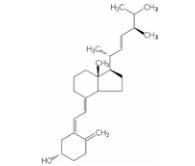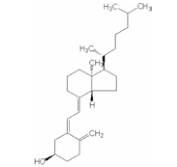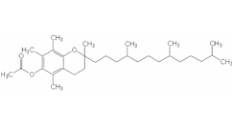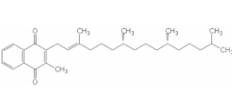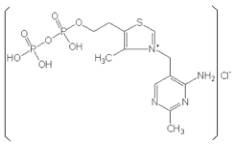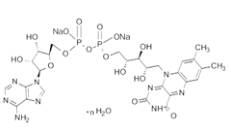康宁corning 431402 FLASK,ERLENMEYER,1L,BAFFLED,PL
三角培养瓶 1000ml 缓冲底 密闭盖 灭菌 1个/包 25包/箱 5227.17
日度归档:2024年5月5日
和光纯药WAKO 195-16031 StemSure (R) Freezing Medium 100ml
和光纯药WAKO 195-16031 StemSure (R) Freezing Medium for Cell Culture –
荧光染料37130 TAMRA azide 5-isomer 500 uL 10 mM/DMSO
lumiprobe荧光染料37130 TAMRA azide 5-isomer 500 uL 10 mM/DMSO lumiprobe荧光染料TAMRA 叠氮基 5-isomer 500 uL 10 mM/DMSO 210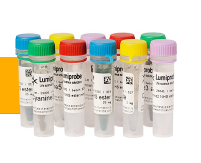
Whatman 滤膜 29168190 TE36, PTFE, 0.45 Micro meter, 50 mm, 50/pk – PROMO
Whatman 滤膜 29168190 TE36, PTFE, 0.45 Micro meter, 50 mm, 50/pk – PROMO TE36, PTFE, 0.45 Micro meter, 50 mm, 50/pk – PROMO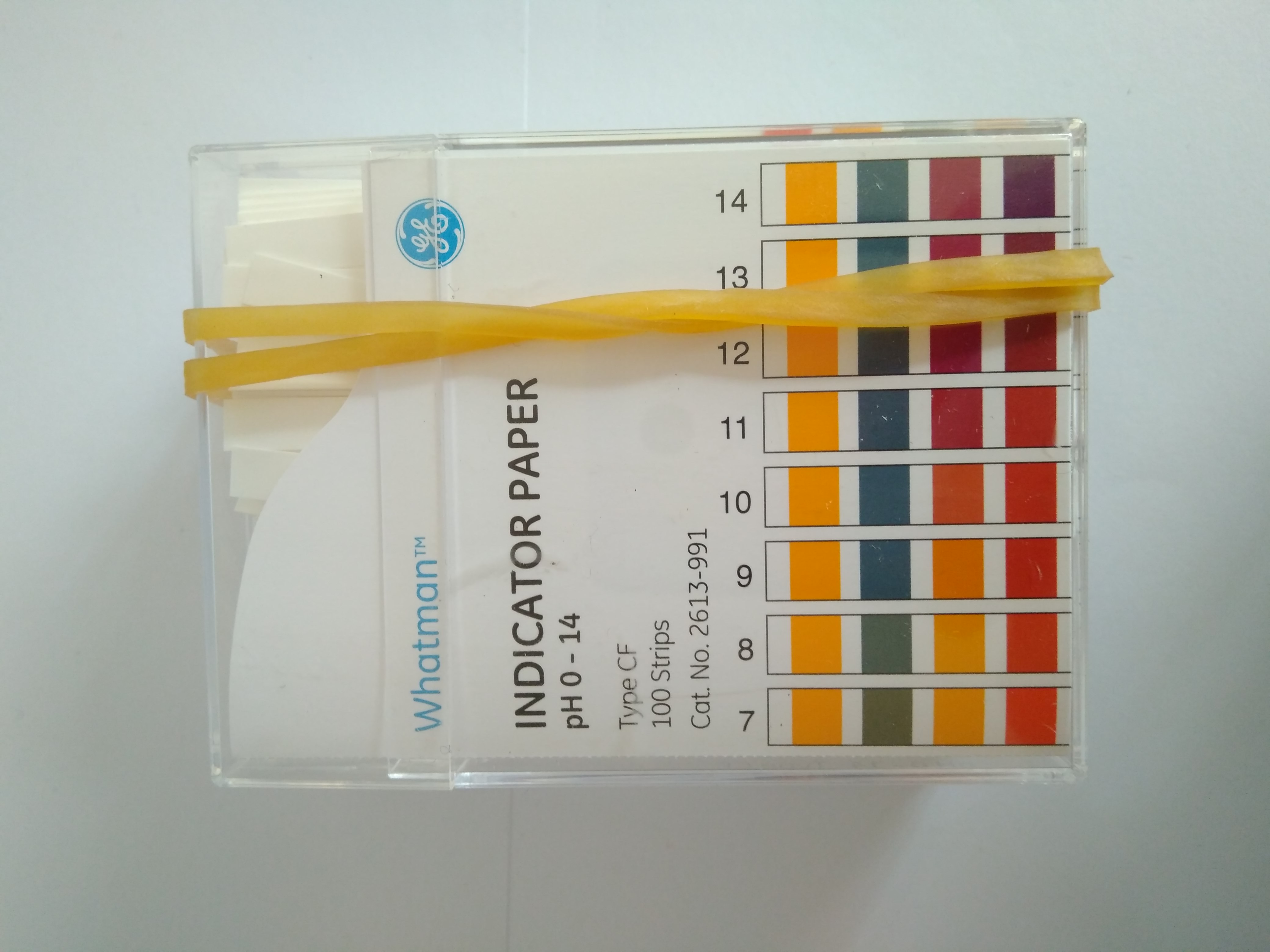
脂溶性维生素
| 产品编号 | 产品名称 | 产品规格 | 产品等级 | 产品价格 |
| 039-00291 | Calciferol 钙化醇 | 1g | - | - |
| 224-00361 | Cholecalciferol 胆钙化醇 | 100mg | - | - |
| 220-00363 | Cholecalciferol 胆钙化醇 | 1g | - | - |
| 201-18483 | (±)-α-Tocopherol Acetate (±)-α-生育酚乙酸酯 | 5g | - | - |
| 203-18482 | (±)-α-Tocopherol Acetate (±)-α-生育酚乙酸酯 | 25g | - | - |
| 205-18481 | (±)-α-Tocopherol Acetate (±)-α-生育酚乙酸酯 | 100g | - | - |
| 221-00371 | Vitamin K1 维生素K1 | 1g | - | - |
| 227-00373 | Vitamin K1 维生素K1 | 5g | - | - |
| 229-00372 | Vitamin K1 维生素K1 | 25g | - | - |
| 035-03831 | Cocarboxylase 辅羧酶 | 100mg | - | - |
| 031-03833 | Cocarboxylase 辅羧酶 | 1g | - | - |
| 033-03832 | Cocarboxylase 辅羧酶 | 25g | - | - |
| 068-00161 | Flavin Adenine Dinucleotide Disodium Salt n-Hydrate 黄素腺嘌呤二核苷酸磷酸钠盐n水合物 | 10mg | - | - |
| 064-00163 | Flavin Adenine Dinucleotide Disodium Salt n-Hydrate 黄素腺嘌呤二核苷酸磷酸钠盐n水合物 | 100mg | - | - |
| 062-00164 | Flavin Adenine Dinucleotide Disodium Salt n-Hydrate 黄素腺嘌呤二核苷酸磷酸钠盐n水合物 | 1g | - | - |
脂溶性维生素
◆维生素D2
钙化醇(Calciferol)
|
CAS No. 50-14-6 C28H44O=396.66 可溶性溶剂:乙醇 用途(作用):维生素D2化合物。 |
|
◆维生素D3
胆钙化醇(Cholecalciferol)
|
CAS No. 67-97-0 C27H44O=384.64 纯度:97.0+%(HPLC) 可溶性溶剂:乙醇 用途(作用):维生素D3化合物。 |
|
◆维生素E
(±)-α-生育酚乙酸酯((±)-α-Tocopherol Acetate)
|
CAS No. 7695-91-2 C31H52O3=472.74 纯度:96.0+%(HPLC) 可溶性溶剂:丙酮 用途(作用):维生素E化合物。 |
|
◆维生素K1
维生素K1(Vitamin K1)
|
CAS No. 84-80-0 C31H46O2=450.70 纯度:97.0 ~ 102.0%(Absorptiometry) 可溶性溶剂:2,2,4- 三甲基戊烷 用途(作用):维生素K1化合物。 |
|
◆其他维生素相关成分
辅羧酶(Cocarboxylase)
|
CAS No. 154-87-0 C12H19ClN4O7P2S=460.77 纯度:90.0+%(HPLC) 可溶性溶剂:水 用途(作用):硫胺素'(维生素B1)的二磷酸(焦磷酸)酯化合物。参与羧基酶进行的脱碳酸反应。 |
|
黄素腺嘌呤二核苷酸磷酸钠盐n水合物(Flavin Adenine Dinucleotide Disodium Salt n-Hydrate)
|
C27H31N9Na2O15P2・nH2O (C27H31N9Na2O15P2=829.51) 纯度:98.0 ~ 102.0+%(Absorptiometry) (无水物换算) 可溶性溶剂:水 用途(作用):作为黄素酶的辅酶参与细胞内的氧化还原系反应和线粒体上的电子传递反应、糖类、脂质、蛋白质等活体代谢反应。 |
|
相关资料详情请查看:http:///pdf/show/80.html
琥珀酸/丁二酸检测试剂盒 Succinic Acid Assay Kit 货号:K-SUCC Megazyme中文站
琥珀酸/丁二酸检测试剂盒
英文名:Succinic Acid Assay Kit
货号:K-SUCC
规格:20 assays (manual) / 200 assays
The Succinic Acid test kit is suitable for the specific assay of succinic acid in wine, cheese, eggs, sauce and other food products.
Extended cofactors stability. Dissolved cofactors stable for > 1 year at 4oC.
Suitable for manual, auto-analyser and microplate formats.
UV-method for the determination of Succinic Acid in foodstuffs,
feed, wine and other materials
Principle:
(succinyl-CoA synthetase)
(1) Succinic acid + ATP + CoA → ADP + succinyl-CoA + Pi
(pyruvate kinase)
(2) ADP + PEP → ATP + pyruvate
(L-lactate dehydrogenase)
(3) Pyruvate + NADH + H+ → NAD+ + L-lactic acid
Kit size: 20 assays (manual) / 200 (microplate)
/ 270 (auto-analyser)
Method: Spectrophotometric at 340 nm
Reaction time: ~ 6 min
Detection limit: 0.26 mg/L
Application examples:
Wine, fruit and vegetables, soy sauce, cheese, egg, egg products
and other materials (e.g. biological cultures, samples, etc.)
Method recognition:
Methods based on this principle have been accepted by EEC
Advantages
- Very competitive price (cost per test)
- All reagents stable for > 2 years as supplied
- Very rapid reaction (even at room temperature)
- Mega-Calc™ software tool is available from our website for hassle-free raw data processing
- Standard included
- Extended cofactors stability
- Suitable for manual, microplate and auto-analyser formats
Q1. Is the Succinic Acid Assay Kit (K-SUCC) suitable for measurement using cell culture media samples?
Yes, assuming that the concentration of the analyte in the sample (after sample preparation) is above the limit of detection for the kit. It may be sufficient to use the sample directly in the assay after clarification by centrifugation / filtering followed by dilution (if required) in distilled water.
Q2. Should the pH of the sample be adjusted even for samples in acidic media?
The pH of the assay solution after the sample is added should be the same as that of the assay buffer that is supplied with the kit.
Low sample volumes (e.g. 0.1 mL) are not likely to affect the pH of the assay solution and therefore may not require pH adjustment.
Samples above 0.1 mL are more likely to affect the pH of the assay solution and therefore the pH of these samples should be adjusted as described in the data booklet, prior to addition to the assay.
Q3. Sometimes a negative absorbance change is obtained for the blank samples, is this normal? Should the real value (negative absorbance change) or “0” be used in the calculation of results?
Sometimes the addition of the last assay component can cause a small negative absorbance change in the blank samples due to a dilution effect and in such cases it is recommended that the real absorbance values be used in the calculation of results.
Q4. There is an issue with the performance of the kit; the results are not as expected.
If you suspect that the Megazyme test kit is not performing as expected such that expected results are not obtained please do the following:
- Ensure that you have tested the standard sample that is supplied with the Megazyme test kit.
- Send the results of the kit standard, blank samples and the results obtained for your sample, in the relevant MegaCalc spreadsheet (if available) to Megazyme (cs@megazyme.com). Where available the relevant MegaCalc spreadsheet can be downloaded from where the product appears on the Megazyme website.
- State the kit lot number being used (this is found on the outside of the kit box).
- State which assay format was used (refer to the relevant page in the kit booklet if necessary).
- State exact details of any modifications to the standard procedure that is provided by Megazyme.
- State the sample type and describe the sample preparation steps if applicable.
Q5. The pH of my sample is low (pH ~ 3.0), do I need to adjust this before I use the sample in the kit assay?
The final pH of the kit assay after the sample is added should not change from what it should be (as stated in the kit for the assay buffer). If it does change then the sample will require pH adjustment. In most cases the sample volume being used is low relative to the final assay volume and in this case the pH of the kit assay is unlikely to be affected.
Q6. How can I work out how much sample to extract and what dilution of my sample should be used in the kit assay?
Where the amount of analyte in a liquid sample is unknown, it is recommended that a range of sample dilutions are prepared with the aim of obtaining an absorbance change in the assay that is within the linear range.
Where solid samples are analysed, the weight of sample per volume of water used for sample extraction/preparation can be altered to suit, as can the dilution of the extracted sample prior to the addition of the assay, as per liquid samples.
Q7. Can you explain, step by step, how to follow the method and perform the kit assay?
For users who are not familiar with how to use the Megazyme tests kits then it is recommended that they follow this example, e.g. D-Fructose/D-Glucose Assay kit K-FRUGL (http://secure.megazyme.com/D-Fructose-D-Glucose-Assay-Kit):
1. The kit components are listed on pages 2-3 of the kit booklet.
2. Prepare the kit reagents as described on page 3.
3. For separate measurements of glucose and fructose follow procedure A on page 4.
4. Pipette the volumes listed for water, sample, solution 1 and solution 2 into 3 mL, 1 cm pathlength cuvettes. Duplicate sample assays and duplicate blanks are recommended. Mix the contents of each cuvette by inversion (seal the cuvette using parafilm or a plastic cuvette cap – do not use a finger) then after ~3 min record the first absorbance reading of each cuvette at 340 nm (this is reading A1).
5. Then add suspension 3 and mix the contents of each cuvette by inversion. Incubate for 5 minutes then record the absorbance reading of each cuvette at 340 nm (this is reading A2). NB. It is essential that the reaction is compete. To assess this, record the absorbances at ~ 2 minute intervals and until the absorbance plateaus. A stable absorbance indicates that the reaction is complete. If the absorbance continues to increase then continue to record absorbances until it plateaus and only then record absorbance reading A2.
6. Then add suspension 4 and mix the contents of each cuvette by inversion. Incubate for 5 minutes then take absorbance reading of each cuvette at 340 nm (this is reading A3). NB. As above, assess that the reaction has completed by take subsequent readings at ~2 min intervals.
7. For simple, automated results analysis, input the absorbance readings (A1, A2, A3) for samples and blanks into the K-FRUGL MegaCalc.
To ensure that the assay is working, and being performed correctly it is recommend that the test is performed using the standard sample that is provided with the kit and to obtain the expected values before proceeding to test real samples.
It is recommend that new users also watch this video which highlights how to perform the assays.
Many of the other Megazyme test kits follow a similar format.
Q8. I have some doubts about the appearance/quality of a kit component what should be done?
If there are any concerns with any kit components, the first thing to do is to test the standard sample (control sample) that is supplied with the kit and ensure that the expected value (within the accepted variation) is obtained before testing any precious samples. This must be done using the procedure provided in the kit booklet without any modifications to the procedure. If there are still doubts about the results using the standard sample in the kit then send example results in the MegaCalc spread sheet to your product supplier (Megazyme or your local Megazyme distributor).
Q9. How much sample should be used for the clarification/extraction of my sample?
The volume/weight of sample and total volume of the extract can be modified to suit the sample. This will ultimately be dictated by the amount of analyte of interest in the sample and may require empirical determination. For low levels of analyte the sample:extract volume ratio can be increased (i.e. increase the sample and/or decrease the total extraction volume).
Alternatively, for samples with low concentrations of analyte, a larger sample volume can be added to the kit assay. When altering the sample volume adjust the distilled water volume added to the assay accordingly so that the total assay volume is not altered.
Q10. Can the test kit be used to measure biological fluids and what sample preparation method should be used?
The kit assay may work for biological fluids assuming that inositol is present above the limit of detection for the kit after any sample preparation (if required). Centrifugation of the samples and use of the supernatant directly in the kit assay (with appropriate dilution in distilled water) may be sufficient. However, if required a more stringent sample preparation method may be required and examples are provided at the following link:http://www.megazyme.com/docs/analytical-applications-downloads/biological_samples_111109.pdf?sfvrsn=2
The test kit has not been tested using biological fluids as samples because it is not marketed or registered as a medical device. This will therefore require your own validation.
Q11. Can the manual assay format be scaled down to a 96-well microplate format?
The majority of the Megazyme test kits are developed to work in cuvettes using the manual assay format, however the assay can be converted for use in a 96-well microplate format. To do this the assay volumes for the manual cuvette format are reduced by 10-fold. The calculation of results for the manual assay format uses a 1 cm path-length, however the path-length in the microplate is not 1 cm and therefore the MegaCalc spreadsheet or the calculation provided in the kit booklet for the manual format cannot be used for the micropalate format unless the microplate reader being used can.
There a 3 main methods for calculation of results using the microplate format:
- The easiest method is to use a microplate reader that has a path-length conversion capability (i.e. the microplater reader can detect the path-length of each well and convert the individual readings to a 1 cm path-length). This will allow values to be calculated using the MegaCalc calculation software which can be found where the product is located on the Megazyme website.
- Perform a standard curve of the analyte on each microplate that contains test samples and calculate the result of the test samples from the calibration curve (concentration of analyte versus absorbance).
- Perform a standard curve of the analyte in both the cuvette format (i.e. with a 1 cm path-length) and the 96-well microplate format and use these results to obtain a mean conversion factor between the cuvette values and the microplate values. Subsequent assays in the microplate format can then be converted from the calculated conversion factor.
Q12. Can the sensitivity of the kit assay be increased?
For samples with low concentrations of analyte the sample volume used in the kit assay can be increased to increase sensitivity. When doing this the water volume is adjusted to retain the same final assay volume. This is critical for the manual assay format because the assay volume and sample volume are used in the calculation of results.
Q13. Must the minimum absorbance change for a sample always be at least 0.1?
No. The 0.1 change of absorbance is only a recommendation. The lowest acceptable change in absorbance can is dictated by the analyst and equipment (i.e. pipettes and spectrophotometer) and therefore can be can be determined by the user. With accurate pipetting, absorbance changes as low as 0.02 can be used accurately.
If a change in absorbance above 0.1 is required but cannot be achieved due to low concentrations of analyte in a sample, this can be overcome by using a larger sample volume in the assay to increase the absorbance change and thereby increase sensitivity of the assay. When doing this the increased volume of the sample should be subtracted from the distilled water volume that is added to the assay so that the total assay volume is unaltered. The increase sample volume should also be accounted for when calculating final results.
Q14. Can the sensitivity of the kit assay be increased?
Yes. Samples with the lower concentrations of analyte will generate a lower absorbance change. For samples with low concentrations of analyte, a larger sample volume can be used in the assay to increase the absorbance change and thereby increase sensitivity of the assay. When doing this the increased volume of the sample should be subtracted from the distilled water volume that is added to the assay so that the total assay volume is unaltered. The increase sample volume should also be accounted for when calculating final results.
视频
视频
DryKeeper 自动C型干燥箱 C-3BS 遮光(电解法原理)
| 产品编号 | 产品名称 | 产品规格 | 产品等级 | 产品价格 |
| WEB0003NEW | DryKeeper 自动C型干燥箱 C-3BS 遮光(电解法原理) | 1 set | – | – |
| WEB0003 | DryKeeper 自动C型干燥箱 C-3BS 遮光(干燥剂除湿) | 1 set | – | – |
| WEB0001 | DryKeeper 自动C型干燥箱 C-3B 黑框(电解法原理) | 1 set | – | – |
| WEB0002 | DryKeeper 自动C型干燥箱 C-3W 白框(电解法原理) | 1 set | – | – |
| WEB0004 | 备用隔板(C-3用) | 1 pc | – | – |
DryKeeper 自动C型干燥箱C-3BS 遮光(电解法原理)-产品编号:WEB0003NEW
采用高分子电解质膜的水分子电解法,柜内湿度保持在30~40%RH的低湿度范围。
LED灯,低功耗。
BS :黑框,本体茶色玻璃

|
产品编号 |
产品名称 |
规格 |
|
WEB0003(现货) |
DryKeeper 自动C型干燥箱 C-3BS 遮光(干燥剂除湿法) |
1 set |
|
WEB0003NEW |
DryKeeper 自动C型干燥箱 C-3BS 遮光(电解法原理) |
1 set |
※有效的内部尺寸(mm):255W×338D×452H
※外部尺寸(mm):扣锁款 317W×392D×617H
※重量:约7㎏
注意:两款干燥箱的除湿原理不同。
◆除湿原理
采用高分子电解质膜的水分子电解法,通过电解箱内水分进行随时除湿。
◆特色
● 全自动式,无需更换硅胶。常温下柜内湿度可保持在30~40%RH,适合长时间保管物品。
● 结合模塑部件,功能和强度都得到进一步改善。
● 柜内采用空气循环对流风扇,除湿能力大幅提高。
● 隔板位置可根据保管物品的大小进行调整。(15格,每格28mm)
◆相关产品
WEB0001 DryKeeper 自动C型干燥箱C-3B 黑框(电解法原理)
WEB0002 DryKeeper 自动C型干燥箱C-3W 白框(电解法原理)
WEB0003 DryKeeper 自动C型干燥箱C-3BS 遮光(干燥剂除湿法)
抗躁狂药
| 产品编号 | 产品名称 | 产品规格 | 产品等级 | 产品价格 |
| 122-01132 | Lithium Carbonate 碳酸锂 | 25g | ||
| 124-01131 | Lithium Carbonate 碳酸锂 | 100g | ||
| 126-01135 | Lithium Carbonate 碳酸锂 | 250g |
抗躁狂药
◆碳酸锂(Lithium Carbonate)
|
CAS No. 554-13-2 Li2CO3=73.89 纯度:99.0+%(Titration)(干燥后) 可溶性溶剂:稀盐酸 用途(作用):作用于多数中枢神经系统的神经传递物质和受体。 |
Li2CO3 |
相关资料详情请查看:http:///pdf/show/80.html
α-(1-2,3,4,6)-L-岩藻糖苷酶(智人) α-(1-2,3,4,6)-L-Fucosidase (Homo sapiens) 货号:E-FUCHS Megazyme中文站
α-(1-2,3,4,6)-L-岩藻糖苷酶(智人)
英文名:α-(1-2,3,4,6)-L-Fucosidase (Homo sapiens)
货号:E-FUCHS
规格:10 Units at 25°C (~ 34 U at 37°C)
High purity α-(1-2,3,4,6)-L-Fucosidase (Homo sapiens) for use in research, biochemical enzyme assays and in vitrodiagnostic analysis.
EC 3.2.1.51
CAZy Family: GH29
CAS: 9037-65-4
alpha-L-fucosidase; alpha-L-fucoside fucohydrolase
Recombinant. From Homo sapiens.
In 3.2 M ammonium sulphate.
Specific activity: 7 U/mg protein (on pNP-α-L-fucopyranoside) at pH 4.0 and 25oC; ~ 23 U/mg at 37oC; ~ 68 U/mg at 50oC.
Stability: > 2 years 4oC.
暂无问题解答
暂无视频
Pall颇尔滤膜 12050 GRND WTR SAMPLNG CAP 5UM PK50
Pall颇尔滤膜 12050 GRND WTR SAMPLNG CAP 5UM PK50 4650 37198
BD培养基 237310 500 g EA Difco Dubos Oleic Agar Base Dubos Oleic琼脂基础
BD培养基 237310 500 g EA Difco Dubos Oleic Agar Base Dubos Oleic琼脂基础 
兽药混合标准液(喹诺酮类药物)
| 产品编号 | 产品名称 | 产品规格 | 产品等级 | 产品价格 |
| 227-02051 | Veterinary Drug Mixture Standard Solution (Quinolone) (each 20μg/ml) 兽药混合标准液(喹诺酮类)(各20μg/ml) |
1ml | for High Performance Liquid Chromatography | – |
| 223-02053 | Veterinary Drug Mixture Standard Solution (Quinolone) (each 20μg/ml) 兽药混合标准溶液(喹诺酮类)(各20μg/ml) |
1mlx5A | for High Performance Liquid Chromatography | – |
兽药混合标准液(喹诺酮类药物)(各20μg/ml)
Veterinary Drug Mixture Standard Solution (Quinolone) (each 20μg/ml)
成分
马波沙星、诺氟沙星、氧氟沙星、环丙沙星(盐酸盐水合物)、达氟沙星、恩氟沙星、奥比沙星、盐酸沙氟沙星、二氟沙星、恶喹酸、萘啶酸、氟甲喹、吡咯酸
每个成分浓度为:20μg/ml;
相关产品
|
产品编号 |
产品名 |
中文名 |
包装 |
|
220-02203 |
Veterinary Drug Mixture Standard Solution (Hormone) (each 20μg/ml Acetonitrile Sol |
兽药混合标准液(激素类)(各20μg/ml乙腈溶液) |
1ml |
|
224-02201 |
1ml x5A |
||
|
225-02091 |
Veterinary Drug Mixture Standard Solution (Macrolide) (each 20μg/ml Acetonitrile Sol |
兽药混合标准液(大环内酯类)(各20μg/ml乙腈溶液) |
1ml |
|
221-02093 |
1ml x5A |
||
|
224-02083 |
Veterinary Drug Mixture Standard Solution (Sulfonamide+Antifolate) (each 20μg/ml) |
兽药混合标准溶液(磺胺类+抗叶酸制剂类)(各20μg/ml) |
1ml x5A |
|
228-02081 |
1ml |
||
|
224-02103 |
Veterinary Drug Mixture Standard Solution (Dye) (each 20μg/ml Methanol Solution) |
兽药混合标准溶液(染料类)(各20μg/ml) |
1ml x5A |
|
228-02101 |
1ml |
||
|
220-01681 |
Veterinary Drug Mixture Standard Solution PL-1-3 (each 20μg/ml Methanol Solution) |
兽药混合标准液PL-1-3(各20μg/ml甲醇溶液) |
1ml x 5A |
|
226-01683 |
1ml |
||
|
223-01693 |
Veterinary Drug Mixture Standard Solution PL-2-1 (each 20μg/ml Methanol Solution) |
兽药混合标准液PL-2-1(各20μg/ml甲醇溶液) |
1ml |
|
227-01691 |
1ml x5A |
卡尔费休试剂-库伦法/容量法试剂
| 产品编号 | 产品名称 | 产品规格 | 产品等级 | 产品价格 |
| AQ-AXI | AQUAMICRON® AXI (621-01755) 可代替全部库伦试剂,无吡啶AXI |
500mL | – | – |
![]() AQUAMICRON® 卡尔费休试剂
AQUAMICRON® 卡尔费休试剂
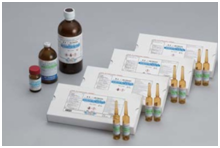
卡尔费休法使用卡尔费休试剂测定水分含量,该试剂定量地、有选择性地与水发生反应。卡尔费休试剂的组成成分是碘、二氧化硫、盐基和溶剂,如酒精。
这种方法可用于库伦及容量滴定系统。该法基于卡尔费休试剂与水反应的碘定量法,如果试样中含有能够与碘反应的物质或者某些通过碘化物氧化而产生碘的物质,结果出现误差。
即使某些物质不能直接滴定,其水分还可以用间接法加以测定,如水汽化法。详情请向金畔()垂询。
◆库伦试剂(AQUAMICRON® )特别:AXI可代替AX,价格更优。
|
货号 |
品名 |
规格 |
包装 |
主要溶剂 |
用途 |
|
621-01755 |
AQUAMICRON® AXI (AQ-AXI) 可代替全部库伦试剂,无吡啶AXI |
最大水分0.15 mg H2O/mL |
500 mL |
甲醇,碳酸丙烯酯,不含氯仿和吡啶 |
阳极液:检测有机溶剂、无机物化学品、油类、石油产品、各种汽油等 |
|
604-07485 |
AQUAMICRON® AX 阳极液,用于一般用途AX |
||||
|
601-07255 |
AQUAMICRON® AS 阳极液,用于油类AS |
最大水分0.15 mg H2O/mL |
500 mL |
甲醇,氯仿,含有4-二甲胺基吡啶 |
阳极液:检测石脑油、汽油、柴油、绝缘油等 |
|
605-07591 |
AQUAMICRON® AKX 阳极液,用于酮类AKX |
最大水分0.15 mg H2O/mL |
500 mL |
碳酸丙烯酯,二甘醇-甲醚,不含氯仿,含有4-二甲胺基吡啶 |
阳极液:检测酮类、硅油、低羟基酸、某些醛类(芳香族化合物)等 |
|
602-07501 |
AQUAMICRON® CXU 阴极液,通用CXU |
最大水分0.6 mg H2O/mL |
5 mL×10 |
甲醇,不含吡啶 |
阴极液:与AXI/AX/AS/AKX配合使用 |
|
632-07065 |
AQUAMICRON® FLS 用于无玻璃型电解池FLS |
最大水分0.15 mg H2O/mL |
500 mL |
甲醇,碳酸丙烯酯,不含吡啶 |
适用于一液型、无玻璃型电解池:有机溶液(酒精、酯类、苯、甲苯),无机气体等 |
◆容量滴定法试剂:SS-Z(无吡啶型)
|
类别 |
货号 |
品名 |
包装 |
用途 |
规格 |
|
滴定剂 |
631-03495 |
AQUAMICRON Titrant SS-Z 1mg (Karl Fischer Reagent SS-Z) 容量法,一般用途,滴定剂SS-Z 1mg,无吡啶 |
500 mL |
适合于一般用途低含水量,溶剂是二甘醇-甲醚 |
滴定量0.7~1.2 mg H2O/mL |
|
634-03505 |
AQUAMICRON Titrant SS-Z 3mg (Karl Fischer Reagent SS-Z) 容量法,一般用途,滴定剂SS-Z 3mg,无吡啶 |
500 mL |
适合于一般用途,溶剂是二甘醇-甲醚 |
滴定量2.5~3.5 mg H2O/mL |
|
|
631-03515 |
AQUAMICRON Titrant SS-Z 5mg (Karl Fischer Reagent SS-Z) 容量法,一般用途,滴定剂SS-Z 5mg,无吡啶 |
500 mL/1 L |
一般用途高含水量,溶剂是二甘醇-甲醚 |
滴定量4.5~5.5 mg H2O/mL |
|
|
636-03521 |
|||||
|
脱水溶剂 |
608-07525 |
AQUAMICRON Solvent GEX 容量法溶剂,一般用途,无吡啶GEX溶剂 |
500 mL |
【通用】有机溶剂、无机化学品、农用化学品,医药品,化肥,清洁剂,食品等 |
含水量0.2 mg H2O/mL |
|
635-03535 |
AQUAMICRON Solvent OLX 容量法溶剂,用于油类,无吡啶OLX溶剂 |
500 mL |
【油类用】石脑油,汽油,柴油,绝缘油等 |
含水量0.5 mg H2O/mL |
|
|
605-07535 |
AQUAMICRON Solvent OLII 容量法溶剂,用于油类脂肪,无吡啶OLII溶剂 |
500 mL |
【油类.油脂类用】石脑油,汽油,柴油,重油,绝缘油,油类和脂肪(硬化油,人造黄油等)等 |
含水量0.3 mg H2O/mL |
|
|
632-03545 |
AQUAMICRON Solvent KTX 容量法溶剂,用于酮类,无吡啶KTX溶剂 |
500 mL |
【酮类用】酮类,硅油,乙酸和其他低羟基酸,醛类(乙醛除外)等 |
含水量0.5 mg H2O/mL |
|
|
603-07335 |
AQUAMICRON Solvent SU 容量法溶剂,用于糖类,无吡啶SU溶剂 |
500 mL |
【糖类用】糖类,蛋白质,胶质,添加剂,动物饲料等 |
含水量0.2 mg H2O/mL |
◆SS系列(吡啶型)
|
类别 |
货号 |
品名 |
包装 |
用途 |
规格 |
|
滴定剂 |
608-07025 |
AQUAMICRON Titrant SS 1mg (Karl Fischer Reagent SS) 容量法,一般用途,滴定剂SS 1mg,含吡啶 |
500 mL |
适合于一般用途低含水量,溶剂是氯仿和吡啶 |
滴定量0.7~1.2 mg H2O/mL |
|
601-07015 |
AQUAMICRON Titrant SS 3mg (Karl Fischer Reagent SS) 容量法,一般用途,滴定剂SS 3mg,含吡啶 |
500 mL |
适合于一般用途,溶剂是氯仿和吡啶 |
滴定量2.5~3.5 mg H2O/mL |
|
|
603-07215 |
AQUAMICRON Titrant SS 10mg (Karl Fischer Reagent SS) 容量法,一般用途,滴定剂SS 10mg,含吡啶 |
500 mL |
一般用途高含水量,溶剂是氯仿和吡啶 |
滴定量8~12 mg H2O/mL |
|
|
脱水溶剂 |
600-07085 |
AQUAMICRON Solvent ML 容量法溶剂,一般用途,ML溶剂 |
500 mL |
【通用】有机溶剂、无机化学品、农用化学品,医药品,化肥,清洁剂,食品等 |
含水量0.2 mg H2O/mL |
|
604-07125 |
AQUAMICRON Solvent MS 容量法溶剂,一般用途,含吡啶MS溶剂 |
500 mL |
【通用】有机溶剂、无机化学品、农用化学品,医药品,化肥,清洁剂,食品等,含吡啶 |
含水量0.2 mg H2O/mL |
|
|
603-07075 |
AQUAMICRON Solvent CM 容量法溶剂,用于油类CM溶剂 |
500 mL |
【油类.油脂类用】石脑油,汽油,柴油,重油,绝缘油,油类和脂肪(硬化油,人造黄油等)等,含氯仿 |
含水量0.3 mg H2O/mL |
|
|
604-07245 |
AQUAMICRON Solvent CP 容量法溶剂,用于酮类CP溶剂 |
500 mL |
【酮类用】酮类,硅油,乙酸和其他低羟基酸,醛类(乙酰除外)等,含氯仿 |
含水量0.5 mg H2O/mL |
|
|
606-07065 |
AQUAMICRON Solvent PE 容量法溶剂,用于酮类,PE溶剂 |
500 mL |
【酮类用】酮类,硅油,乙酸和其他低羟基酸,醛类(乙酰除外)等,含吡啶 |
含水量0.2 mg H2O/mL |
|
|
607-07095 |
AQUAMICRON Solvent FM 容量法溶剂,用于糖类FM溶剂 |
500 mL |
【糖类用】糖类,蛋白质,胶质,添加剂,动物饲料等 |
含水量0.2 mg H2O/mL |
|
|
600-07105 |
AQUAMICRON Solvent PP 容量法溶剂,用于醛类,PP溶剂 |
500 mL |
【醛类】乙醛、丙醛、丁醛等,含吡啶 |
含水量0.2 mg H2O/mL |
|
|
607-07115 |
AQUAMICRON Solvent ME 容量法溶剂,用于汽化器ME溶剂 |
500 mL |
【用于汽化器】气态试样,氮气等 |
含水量0.2 mg H2O/mL |
水标准试剂:可溯源到NIST SRM2890,附有分析检测成绩书。
|
类别 |
货号 |
品名 |
包装 |
用途 |
规格 |
|
容量滴定 |
608-07581 |
AQUAMICRON Water Standard 10mg 水标准品 10mg |
8 mL×10 |
容量法中标定 KF试剂的滴定度 |
滴定量 10±0.5 mg H2O/mL |
|
600-07041 |
AQUAMICRON Standard Water Methanol Solution 2mg 水标准甲醇溶液
|
250 mL |
逆滴定的滴定剂 标定滴定剂的滴定量 |
含水量 2.0±0.01 mg H2O/mL |
|
|
库伦滴定法 |
639-15101 |
AQUAMICRON® Water Standard 0.1mg 卡尔费休试剂水标准品 0.1mg |
5 mL×10 |
检测库伦水分仪的精确度 |
滴定量 0.1±0.01 mg H2O/mL |
|
604-07561 |
AQUAMICRON Water Standard 0.2mg 水标准品 0.2mg |
5 mL×10 |
检测库伦水分仪的精确度 |
滴定量 0.2±0.01 mg H2O/mL |
|
|
601-07571 |
AQUAMICRON Water Standard 1mg 水标准品 1mg |
5 mL×10 |
检测库伦水分仪的精确度 |
滴定量 1±0.05 mg H2O/mL |
|
|
609-07511 |
AQUAMICRON Check Solution P 检查溶液P |
100 mL |
终点调节液,可以与AX和AKX一起使用 |
含水量 3.8~4.2 mg H2O/mL |
|
|
637-07071 |
AQUAMICRON Solid Water Standard 固体水标准品 |
10 g |
用于带水分汽化法 装置水分仪 |
含水量 3.83±0.1% |
欲了解相关资料详情请点击:
水分测试方法概述
锂电池新能源的“绊脚石”——水分
三菱化学卡尔费休试剂使用小知识
欲了解更多相关产品请点击:三菱卡氏水分仪
欲了解相关视频请点击文字:
1. 如何处理脂肪油
2. 如何处理粘性样品-1蜂蜜
3. 如何处理粘性样品-2胶粘剂
4. 如何处理吸湿性粉末样品
5. 如何处理其他粉末样品
6. 如何处理树脂样品
7. 如何处理油制样品
8. 如何处理液化气样品
Whatman 滤膜 7060-4716 Cyclopore PC聚碳酸酯膜, 12m 47mm 100/盒
Whatman 滤膜 7060-4716 Cyclopore PC聚碳酸酯膜, 12m 47mm 100/盒 CYL PC 47MM 12.0uM 100/PK
康宁corning 3904 PLT,96WL,FB,BCB,W/LID,GENERAL 96孔板 黑色 透明平底 TC表面 带盖 灭菌 通用型 20个/包
康宁corning 3904 PLT,96WL,FB,BCB,W/LID,GENERAL
96孔板 黑色 透明平底 TC表面 带盖 灭菌 通用型 20个/包 5包/箱 7563.2
水溶性荧光染料153C0 Sulfo-Cyanine7 amine 1 mg
水溶性lumiprobe荧光染料153C0 Sulfo-Cyanine7 amine 1 mg 水溶性lumiprobe荧光染料Sulfo-Cyanine7 氨基 1 mg 110
纤维二糖水解II(微生物) Cellobiohydrolase II (microbial) 货号:E-CBHIIM Megazyme中文站
纤维二糖水解II(微生物)
英文名:Cellobiohydrolase II (microbial)
货号:E-CBHIIM
规格:200 Units
High purity Cellobiohydrolase II (microbial) for use in research, biochemical enzyme assays and in vitro diagnostic analysis.
EC 3.2.1.91
CAZy Family: GH6
CAS: 37329-65-0
cellulose 1,4-beta-cellobiosidase (non-reducing end); 4-beta-D-glucan cellobiohydrolase (non-reducing end)
Recombinant. From microbial source.
In 3.2 M Ammonium sulphate.
Supplied at ~ 200 U/mL.
Specific activity: ~ 38 U/mg protein (on 1,4-β-D-cellopentaitol) at pH 5.5 and 40oC.
Stability: > 4 years at 4oC.
暂无问题解答
暂无视频
WHATMAN硝酸纤维素膜NC膜 0.45um转印迹膜 转印膜10401396
|
WHATMAN NC膜0.2um,30cm*3m
|
|
WHATMAN硝酸纤维素膜NC膜 0.45um转印迹膜 转印膜10401396
100%纯硝酸纤维素膜 Protran™(NC)膜是世界上使用最为广泛的特异性转移介质。ProtranNC膜采用100%纯NC材料制成,保证不含醋酸纤维素材料,确保了最高的结合能力。其它的NC杂交膜可能含有大量的醋酸纤维素,这会降低蛋白的结合能力。Protran杂交膜采用纯NC制成,具有最好的操作强度,兼容多种检测方法,包括同位素法,化学发光法(以luminol为基础),比色法和荧光法等。与PVDF膜相比,ProtranNC膜在使用中不需要甲醇预湿步骤,这使它可以用于那些需要亲水性环境的蛋白质的转移,在转移之前,膜仅需要在水中简单润湿,然后置于转移缓冲液中,而不再需要其它预湿步骤。 高结合力,低背景 小分子蛋白的高保留率 Protran NC膜的一个主要优势在于,经实验证明,结合在Protran膜上的蛋白能够保持分子识别活性长达5年。 Protran NC膜的结合能力为80~150µg/cm2,可高压灭菌(液体冷循环) |
| whatman | 滤膜滤纸滤器 | 10401003 | BA85 300MMx3M 1/PK SH.UPPER |
| whatman | 滤膜滤纸滤器 | 10401180 | PROTRAN BA85 300x600MM 5/PK |
| whatman | 滤膜滤纸滤器 | 10401201 | BA85 55MMx50M 1PK |
| whatman | 滤膜滤纸滤器 | 10401202 | PROTRAN BA85 200x200MM 25/PK |
| whatman | 滤膜滤纸滤器 | 10401226 | BA85 85X400MM 25/PK LAM |
| whatman | 滤膜滤纸滤器 | 10402595 | PROTRAN BA85 150MMx3M 1/PK |
| whatman | 滤膜滤纸滤器 | 10486156 | PROTRAN BA85 70x80MM 50/PK |
| whatman | 滤膜滤纸滤器 | 10542000 | BA85 117x140MM 50/PK BLIN |
| whatman | 滤膜滤纸滤器 | 10542010 | BA85 117x140MM 50/PK 1GLIN |
| whatman | 滤膜滤纸滤器 | 10543000 | BA85 150x340MM 25/PK |
| whatman | 滤膜滤纸滤器 | 10543920 | PROTRAN BA85 80x100MM 20/PK |
| whatman | 滤膜滤纸滤器 | 10546026 | PROTRAN BA85 13.4×8.1CM 20/PK |
| whatman | 滤膜滤纸滤器 | 10548000 | BA85 44.2MMx50M 1/PK |
| whatman | 滤膜滤纸滤器 | 10548023 | PROTRAN BA85 63x228MM 10/PK |
| whatman | 滤膜滤纸滤器 | 10549077 | BA85 80x145MM 20/PK |
| whatman | 滤膜滤纸滤器 | 10549735 | PROTRAN BA85 300MMx50M 1/PK |
| whatman | 滤膜滤纸滤器 | 10549824 | PROTRAN BA85 300MMx3M UB 1/PK |
| whatman | 滤膜滤纸滤器 | 11542000 | BA85 117x140MM NO PRINT 50/PK |
Whatman 滤膜 10311854 597滤纸1/2折叠385mm/100
Whatman 滤膜 10311854 597滤纸1/2折叠385mm/100 597 FF 385MM 100/PK
Whatman 滤膜 5226-848 226 8INx8IN 1000/PK
Whatman 滤膜 5226-848 226 8INx8IN 1000/PK 226 8INx8IN 1000/PK
康宁corning 4867 TIPS,1000UL,BLU,PP,NS,RK,100/1 通用吸头 100-1000ul 蓝色 盒装 未灭菌 100个/包
康宁corning 4867 TIPS,1000UL,BLU,PP,NS,RK,100/1
通用吸头 100-1000ul 蓝色 盒装 未灭菌 100个/包 10包/箱 638.5
Amresco 0162-250G MOLYBDIC ACID AMMONIUM SALT TETRAHYDRATE 钼酸铵,四水
Amresco 0162-250G MOLYBDIC ACID AMMONIUM SALT TETRAHYDRATE 钼酸铵,四水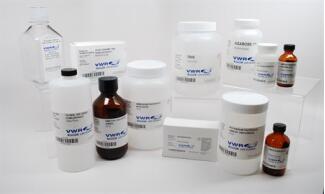
荧光染料43030 Cyanine5 azide 1 mL 10 mM/DMSO
lumiprobe荧光染料43030 Cyanine5 azide 1 mL 10 mM/DMSO lumiprobe荧光染料Cyanine5 叠氮基 1 mL 10 mM/DMSO 410
甘露聚糖酶检测片剂 (200) Mannazyme – 200 Tablets 货号:T-MNZ-200T Megazyme中文站
甘露聚糖酶检测片剂 (200)
英文名:Mannazyme – 200 Tablets
货号:T-MNZ-200T
规格:200 Tablets
High purity dyed and crosslinked Mannazyme tablets for the measurement of enzyme activity, for research, biochemical enzyme assays and in vitro diagnostic analysis.
For the assay of endo-1,4-ß-D-mannanase. Containing AZCL-Galactomannan (carob).
PDF Download
暂无问题解答
暂无视频
Whatman 滤膜 29168017 PURADISC 13/0.45 PES STERILE 50/PK – PROMO20
Whatman 滤膜 29168017 PURADISC 13/0.45 PES STERILE 50/PK – PROMO20 PURADISC 13/0.45 PES STERILE 50/PK – PROMO20
Whatman 滤膜 1540-6958 GR 540 10X15CM 100/PK
Whatman 滤膜 1540-6958 GR 540 10X15CM 100/PK GR 540 10X15CM 100/PK
Whatman 滤膜 1002-150 2号滤纸圆型150mm/100
Whatman 滤膜 1002-150 2号滤纸圆型150mm/100 GR 2 15.0CM 100/PK
Axygen试剂盒 AP-MN-BL-GDNA-250G AxyPrep 血基因组DNA小量制备试剂盒
Axygen试剂盒 AP-MN-BL-GDNA-250G AxyPrep 血基因组DNA小量制备试剂盒 250 prep 盒 1990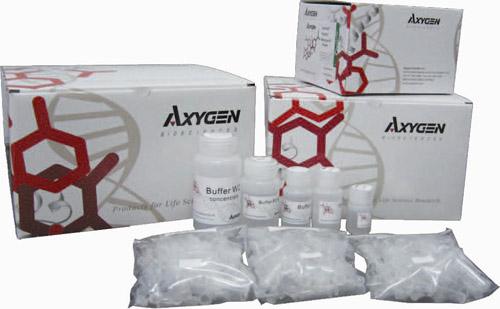
Whatman 滤膜 29167708 GD/X 25/0.2 PTFE 150/PK – PROMO20
Whatman 滤膜 29167708 GD/X 25/0.2 PTFE 150/PK – PROMO20 GD/X 25/0.2 PTFE 150/PK – PROMO20
滤纸架C – 30型(多级型筛分装置付)|柴田科技有限公司-环境检测设备、科学仪器的制造销售
产品详细
商品代码其他情报(式样)
| |
||
|---|---|---|
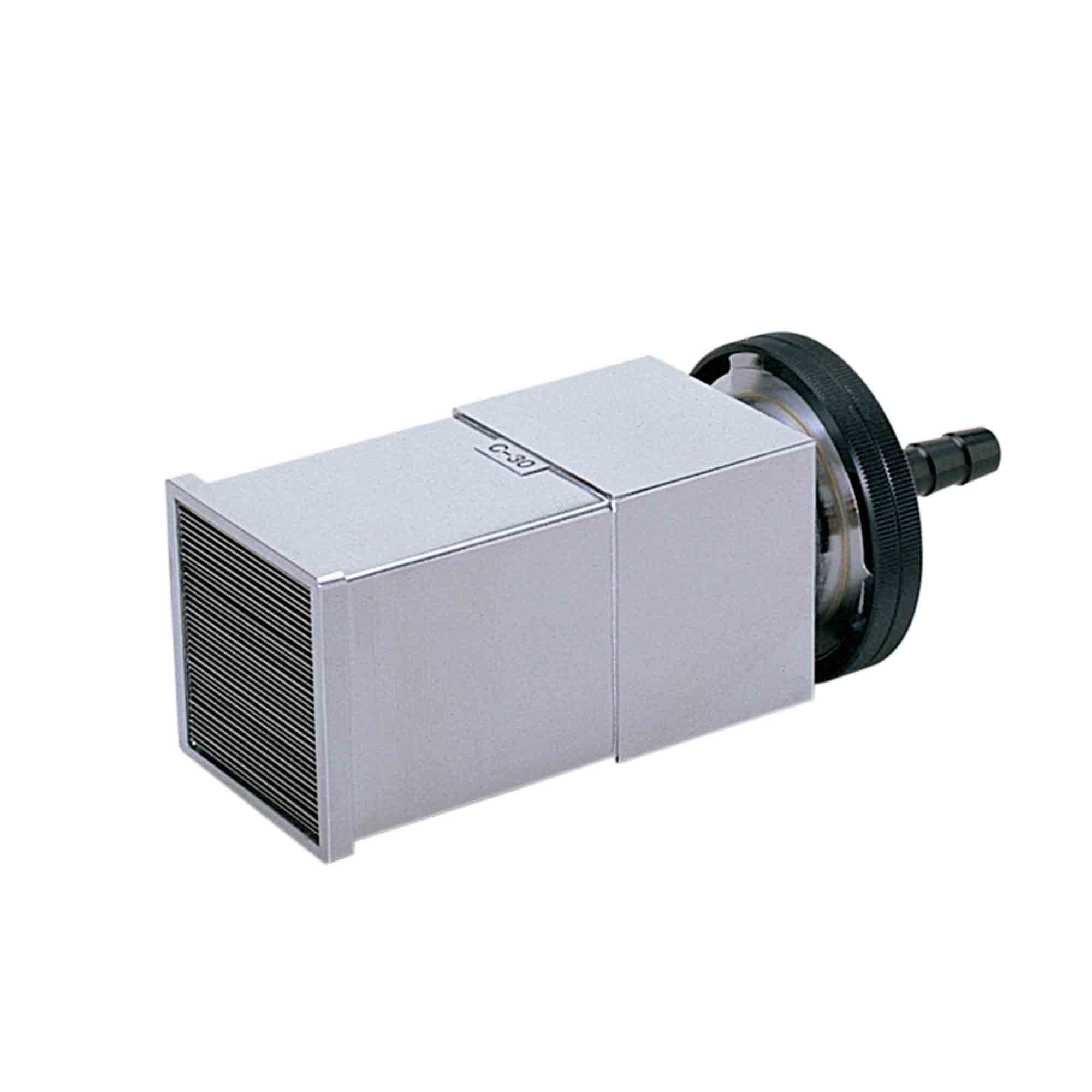 |
||
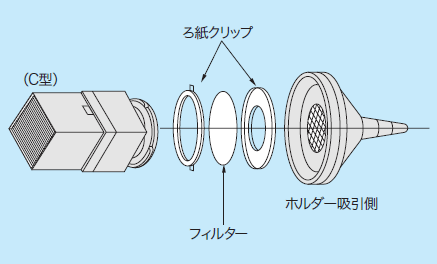 |
||
上海金畔生物科技有限公司
106%2F%3Fc%3D12& ” 106%2F%3Fc%3D12&

